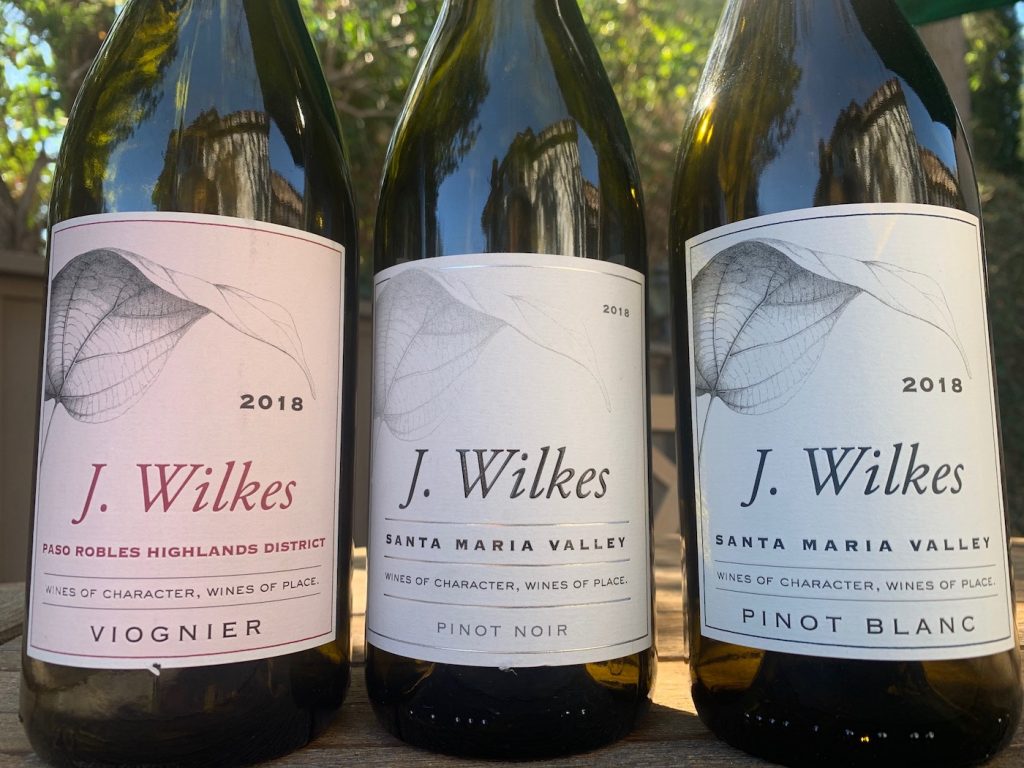Sense of Place J. Wilkes Wines Focus on ‘Appellation Expression’
When I launched my wine writing career in Santa Barbara some 20 years ago, Jeff Wilkes was one of the first personalities I came to know. His enthusiasm for the wines he shared with me was infectious. And his energy and sense of humor made him a fantastic wine sipping companion.

Wilkes was a salesman for the iconic vineyards owned by Santa Barbara’s Miller family: Bien Nacido and Solomon Hills, both nestled in the Santa Maria Valley, and French Camp, located in the warmer highlands of Paso Robles. He was a passionate champion of these unique grape growing regions, and, even more, an ambassador for the world-class wines they produced. He launched his own eponymous label, J. Wilkes, in 2001, as a vehicle to spotlight the potential of the Central Coast’s wine growing appellations, and he’d go on to enjoy a successful career as a vintner until his untimely passing in 2010.
In homage to Jeff Wilkes, the Miller family carried his label forward. It remains part of a varied portfolio of labels that also includes Ballard Lane, Barrel Burner, Smashberry, and the newly acquired Butternut. “Regardless of which of our wines they’re drinking,” director of winemaker Jonathan Nagy told me this week, “we want people to be impressed by the quality of the wine for the price they paid.”
But J. Wilkes stands out for its singular focus: Nagy calls it “appellation expression.”
Nagy is especially familiar with the Santa Maria Valley appellation, which became recognized by the feds as Santa Barbara County’s first AVA, American Viticultural Area, in 1983. After a stint with Robert Mondavi in Napa, he moved back home to Cambria Winery in Santa Maria in the late 1990s, and he’d go on to spend close to 20 years at neighboring Byron Winery. He joined Miller Family Wine Co. last year.
Sandy soils are key to wine growing in the Santa Maria Valley, and so is the east-west valley created by the Santa Ynez Mountains that give vineyards here “a straight shot to the ocean,” says Nagy. “We have one of the longest growing seasons in the world. We get bud break in February and aren’t picking until October or November.”
In the 20-plus years that he’s been making wine here, “vine age and technology in the vineyard now allow us to maximize quality,” he adds, making the J. Wilkes chardonnay, pinot noir, and pinot blanc produced here “more expressive, more concentrated, and more complex.”
By comparison, the Paso Robles Highlands, set on the eastern side of the San Luis Obispo County wine country, “has nice elevation and a really good diurnal shift,” says Nagy. “It can get really hot during harvest days – 100 degrees or more – but then at nighttime there’s a 40- to 50-degrees shift, and that means that vines can really maintain acidity. Among the J. Wilkes wines grown here: zinfandel, cabernet sauvignon and petite sirah.
I taste my way through three J. Wilkes wines this week:
2018 J. Wilkes Pinot Blanc ($20): Refreshing and bright, this white wine from the Santa Maria Valley features green apple and pear notes and a luscious mouth feel. A perfect afternoon quaff and a tasty match for grilled shellfish, salads, and mild cheeses.
2018 J. Wilkes Viognier ($25): Grown in the Paso Robles Highlands District, the aromas on this lovely white wine are alluring: white flowers, nectarines, and apricots. Dense and fruit-driven, with honeysuckle overtones, the mild acidity and bone-dry finish makes it especially food friendly – think grilled chicken, lobster and any cheese-and-nuts platter you come up with.
2018 J. Wilkes Pinot Noir ($30): A classic Santa Maria Valley pinot, with earthy, peppery and black cherry notes. Just enough ripeness to make it elegant and just enough fruit character to make it delicious. Mushroom tarts, roasted duck, and any Brie or mild blue cheese will pair nicely here.
There’s great undercover value with these wines: while various third-party vineyards are sourced each year for the sake of achieving that “appellation expression,” fruit from those high-profile vineyards – Bien Nacido and Solomon Hills from Santa Maria and French Camp from Paso, which are regularly featured on labels two or three times the cost – are regular ingredients in the J. Wilkes wines.
The J. Wilkes tasting room in downtown Santa Barbara is back open. Various flights, wines by the glass, a chocolate-and-wine pairing option and a menu of paninis, salads, and cheese boards are available seven days a week from noon to 7pm inside the Hotel Californian at 35 State Street. Reservations are recommended and masks are required. You can also buy wine at jwilkes.com.





